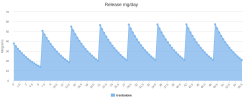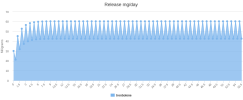Type-IIx
Member
Good point. Personal experience with something is the only means to understanding it.While your information sounds good on paper, you still lack the personal experience of using it.
This MENT Profile [link] might actually be of some value if I had decided, after performing my own balancing of the known tolerability & efficacy factors in consideration of the the availability of other similarly situated AAS, to go ahead and use MENT despite its unfavorable risk/reward tradeoffs for myself.
Since I can really only learn from my mistakes, I should - instead of relying on facts from books, studies, dissertations, & reports from the boards and subreddits - seek to expand my knowledge by making as many archetypal bad life decisions as I can, so that NotHuman and other guys might say, yeah, this guy has practical knowledge, not just bullshit theories from books. Nubain, Cheque drops, snorting Tren base, injecting Progesterone, all forthcoming.
Not true. You can try any permissible frequency (any more frequent and you'll become an actual pincushion) you'd like using SteroidPlotter to visualize how frequent administration of short esters does not cause any "smoothness" or stability, but rather results in more "spiking" meaning a greater # of "peaks" or Cmax # (Css # after 4 t1/2s) & therefore decreased Tmax (time to Cmax). A low Tmax is inherently related to side effects including erythrocytosis/polycythymia, and of course more frequent pinning is associated with greater swelling & pain at the injection site.Ok stated another way. The shorter the ester, the higher the peak. So if you pin the shorter ester more often, which almost always goes hand in hand with a short vs longer ester, then the peaks will remain stable with the more frequent pins. The more frequent you pin, the steadier your blood levels will be. That's just the nature of half life. You get more bang for your buck with the shorter/more frequent pin combo.
Here, I'll illustrate this for you:

Trenbolone enanthate, 350 mg q.w. (350 mg, once weekly)

Trenbolone acetate, 350 mg q.w. as 50 mg q.d. (50 mg daily = 350 mg weekly)
What I see is not in any sense a more stable delivery profile. Rather, given daily 50 mg trenbolone acetate administration, blood concentration oscillate between 60 & 40 mg (actual differences/degrees of change being fairly unimportant) at a considerably higher frequency of Cmax (# of peaks), resulting in reduced Tmax, which is the most important factor relating to the increase to hematocrit.
This frequent administration of a short ester certainly increases dose as fAUC * time, however. This, then, increases efficacy and AR activation (thereby eliciting greater increases in LBM, but also the classical negative side effects of androgens, androgenicity, etc.)
Article on distinguishing progestins, prolactin, and progestagenic androgens (e.g., Tren, MENT, Deca) & SERM vs. AI logic [by Type-IIx] is a writeup that I posted, written by request originally for but not contracted by ProM, to demystify the widespread confusion between gestagenicity (progestagenic effects), estrogenicity, prolactin vs. progesterone vs. progestagenic androgens, etc.Right, to clarify by mental tolerability I'm not referring to positive effects, but the absence of negative effects. Obviously you do not need a study to come to the conclusion that most will tolerate MENT better than tren, but it is not comparable to tren, especially in a deficit. In the context of this post I would just add test/mast.
With Deca however I tend to see reports of paranoia despite a high dose of testosterone alongside it, so I'm not too sure on how it would just be estrogen related. Of course not everyone has these symptoms, but I do consider MENT to be at least somewhat more potent than Deca, so I don't see a reason to use it except for joint relief.
As far as gestagenic side effects, I never really understood what these are besides the suppression on the HPTA (unless we are to assume blood pressure and hypo symptoms are because of this). The underlying imbalance always seems to be estrogen.
Certainly I'm not trying to argue, you know a lot more than me, but if it was more popular maybe I could get it for cheaper
Last edited:

